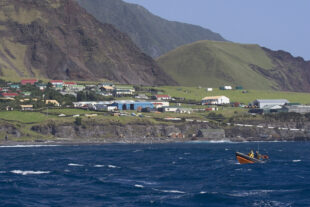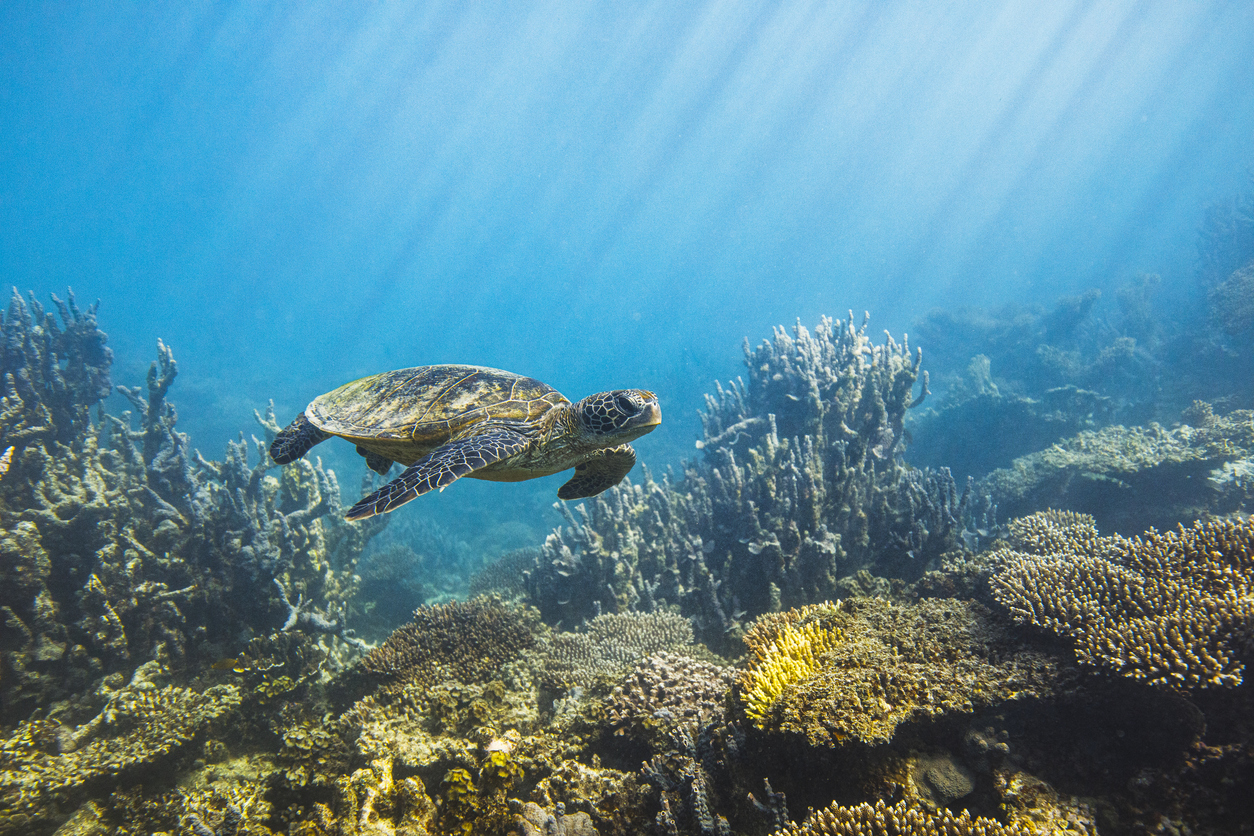As we celebrate Marine Protected Areas (MPA) Awareness Day, it's fitting that we reflect on the importance of MPAs, the role we play in manging those in English waters and the support we provide internationally to the UK Overseas Territories in the Blue Belt Programme.
The Importance of MPAs
MPAs are areas of the ocean established to protect habitats, species and processes essential for healthy, functioning marine ecosystems.
These areas are critical in maintaining the biodiversity of seas, protecting threatened or endangered species and preserving habitats from damage caused by human activities. They play a crucial role by:
- Protecting Biodiversity: They provide safe havens for a variety of marine species, helping to protect threatened or endangered species and preserving the habitats they rely on from damage caused by human activities.
- Supporting Fisheries: By allowing fish populations to recover, breed and grow, MPAs can benefit adjacent fisheries through the spillover effect, where fish migrate out of the protected zones into fishing areas. This supports the sustainability of commercially valuable fish and shellfish populations in our waters.
- Enhancing Resilience: Healthy marine ecosystems are more resilient to environmental changes, such as climate change and pollution, and MPAs contribute to this resilience.
- Food for our plates: Healthy marine ecosystems mean more stock for our seafood industry, nutrition for our bodies and employment opportunities for the fishing industry.
Global Success Stories of MPAs
The UK Overseas Territories (UKOTs) are home to some of the most incredible wildlife and habitats on the planet. In total, the UKOTs contain around 90% of the UK’s endemic species, which are found nowhere else on earth; the OTs also host a huge range of endangered species. Combined, their MPAs cover over 1% of the world’s ocean, meaning they have a significant impact in safeguarding precious marine environments and helping to combat global threats such as climate change.
Together his group of Territories is the largest network of MPAs of its kind on the planet.
The Blue Belt Programme, delivered by MMO and Cefas, is one of the UK Government’s flagship marine conservation programmes. Since 2016 it has worked closely with a number of the UKOTs to assist them in creating and maintaining healthy and productive ecosystems and sustainably managing and protecting 4.4 million square kilometres (km2) of marine environments. A timeline of MPA highlights from the Blue Belt Programme:
2016 – St Helena designate their sustainable use MPA, comprising over 445,000 km2
2016 – Pitcairn Islands designate their no-take MPA, one of the largest in the world at 834,000 km2.
2018 – The South Georgia & South Sandwich Islands MPA (designated in 2012) is enhanced, with the area closed to commercial fishing expanded and strengthened management measures

introduced to ensure sustainability.
2019 – Asension Island designates their entire exclusive economic zone as an MPA, covering over 440,000 km2.
2020 – Tristan da Cunha designates their 700,000 km2 MPA, one of the largest in the Atlantic.
2023 – The Pitcairn Islands and its MPA is awarded Blue Park status, as an area of exemplary marine management and protection.
2023 – St Helena is awarded ‘Hope Spot’ status by Mission Blue as an area of critical importance to ocean science.
2024 – Tristan da Cunha and its MPA is also awarded Blue Park status.
Impacts of MPAs
The effectiveness of MPAs is well-documented around the world, providing numerous examples of their positive impact on marine environments. Here are some compelling success stories:
- The Great Barrier Reef Marine Park, Australia: Covering 344,400 km2 , this MPA is one of the largest and most well-known in the world. Studies have shown that protected zones within the Great Barrier Reef have healthier coral populations and higher fish biomass compared to non-protected areas.
- Papahānaumokuākea Marine National Monument, USA: Located in the Northwestern Hawaiian Islands, this MPA spans over 1.5 million km2 . It has been instrumental in protecting thousands of marine species, many of which are found nowhere else on Earth. Research indicates that the protected status has led to increased populations of predatory fish and improved overall ecosystem health.
- Cabo Pulmo National Park, Mexico: This small MPA, covering just 71 km2, is a remarkable example of a successful marine conservation effort. Once severely overfished, Cabo Pulmo's marine life has rebounded spectacularly since its establishment in 1995. Studies have documented a 463% increase in fish biomass over a decade, making it one of the most successful MPAs globally.

Our role in MPA management
It's MMO’s responsibility to manage fishing activities in English offshore MPAs and oversee marine non-licensable activities (which includes recreational activities such as sailing, motorboating, anchoring, diving, swimming) in inshore MPAs.
In England we have an extensive network of MPAs, with 178 designated areas covering 51% of inshore waters and 37% of offshore waters.
Currently MMO has MPA byelaws in place protecting around 18,000 km2 off our coast from damaging fishing activity.
References:
- Great Barrier Reef Marine Park Authority. (n.d.). Retrieved from GBRMPA.
- Papahānaumokuākea Marine National Monument. (n.d.). Retrieved from PMNM.
- Aburto-Oropeza, O., Erisman, B., Galland, G., Mascareñas-Osorio, I., Sala, E., & Ezcurra, E. (2011). Large Recovery of Fish Biomass in a No-Take Marine Reserve. PLoS ONE, 6(8), e23601.